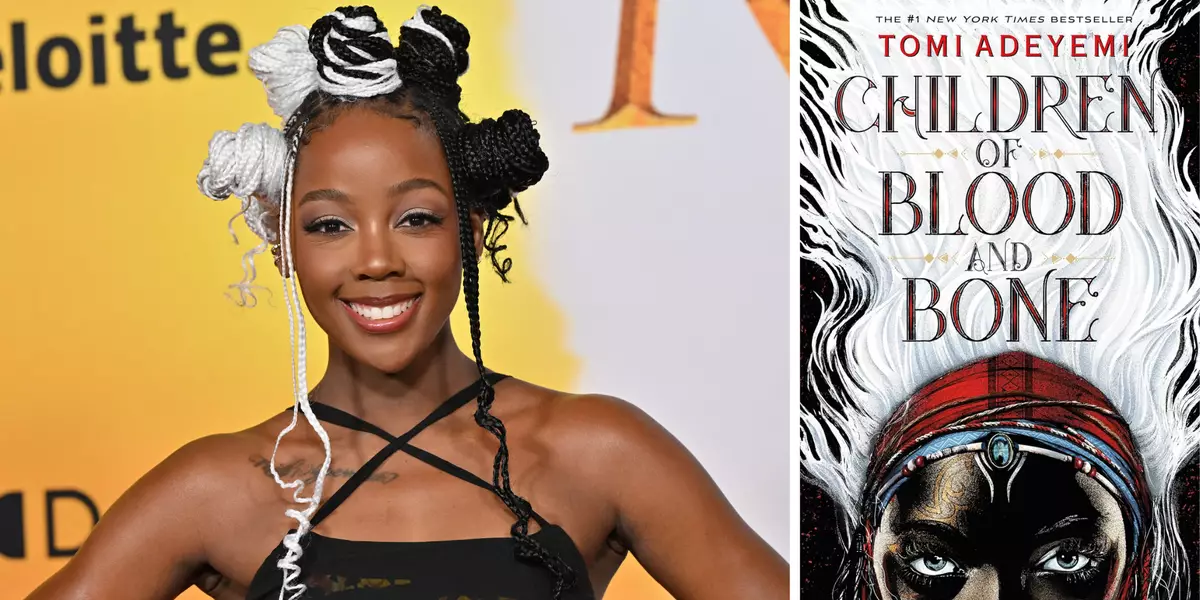Tomi Adeyemi’s “Children of Blood and Bone” is a cultural phenomenon. It has resonated deeply with fans of young adult literature, weaving a rich tapestry of magic, resilience, and empowerment. This beloved novel, part of the “Legacy of Orïsha” trilogy, is finally slated for a cinematic release, generating colossal excitement among its fanbase. Paramount Pictures has acquired the adaptation rights, signaling a desire to bring this mesmerizing story to life with meticulous care and attention. The journey from page to screen is often fraught with challenges, yet Adeyemi’s steadfast involvement promises a faithful representation of her world.
Acknowledging the tumultuous history of the film’s production adds depth to our appreciation of the eventual result. Initially, the rights were secured by Fox 2000 in 2017 before the novel’s official publication. The acquisition of 21st Century Fox by Disney complicated these plans, leading to uncertainty and delays. Yet, the acquisition of the rights by Paramount Pictures in 2022 marks a decisive step towards fulfilling a vision that resonates powerfully with audiences eager for representation. As reported, “Children of Blood and Bone” has become a top priority for Paramount, showcasing the studio’s commitment to not just profit, but to presenting a narrative that reflects diverse experiences and voices.
The Heart of Orïsha: Characters and Themes
At its core, “Children of Blood and Bone” follows the journey of Zélie Adebola, a young woman in the fantastical land of Orïsha, which draws inspiration from West African culture. Magic—a crucial aspect of Zélie’s identity—faces annihilation due to the oppressive regime of King Saran. This narrative arc mirrors contemporary themes of injustice and perseverance, making it profoundly relatable in today’s sociopolitical climate. Zélie, alongside her brother Tzain and the conflicted royal siblings, Princess Amari and Prince Inan, embarks on a quest not only to reclaim their powers but also to challenge the very foundations of a tyrannical monarchy.
The ensemble cast brings a powerful array of talent to the adaptation. Thuso Mbedu, known for her outstanding performance in “The Woman King,” takes on the role of Zélie, while Tosin Cole portrays Tzain with a blend of strength and vulnerability. Amandla Stenberg as Princess Amari and Damson Idris as Prince Inan add layers to a narrative underscored by complex familial relationships. The casting encapsulates the characters’ rich backgrounds and provides an opportunity for deeper interactions, further amplifying the themes of unity and rebellion.
Moreover, the supporting cast, featuring power players like Viola Davis, Chiwetel Ejiofor, and Cynthia Erivo, elevates the film’s potential impact. With such esteemed actors delivering performances that resonate on multiple emotional levels, audiences can expect a cinematic experience that is as compelling as the source material.
The Visionary Behind the Lens
Director Gina Prince-Bythewood’s involvement is a beacon of hope for fans of “Children of Blood and Bone.” Renowned for crafting narratives that center around strong, multifaceted women, Prince-Bythewood’s expertise in storytelling promises to breathe life into Adeyemi’s world. Their collaborative synergy, as expressed by Adeyemi, hints at an alignment of vision that can transform this adaptation into an epic saga—a journey that transcends the conventional and invokes a sense of belonging and hope.
In an interview, Adeyemi described Prince-Bythewood as a “calm force of nature,” a description that speaks volumes about the director’s ability to navigate the complexities of adapting such a rich narrative. Their partnership appears not only to prioritize authenticity but also to celebrate the power of storytelling through the lens of women who are often marginalized in cinematic narratives.
Journey to the Big Screen: What Lies Ahead
As anticipation builds towards its premiere on January 15, 2027, fans can hardly contain their excitement about “Children of Blood and Bone.” Director Gina Prince-Bythewood’s recent updates from the production phase reflect a passionate endeavor, further igniting enthusiasm for the project. The insights into the filming process—spanning two countries and featuring a dedicated crew—indicate a film that is the result of thoughtful planning and creative collaboration.
With the cinematic interpretation of “Children of Blood and Bone,” the potential for magical storytelling feels limitless. This adaptation promises to not only enchant audiences with its vivid representation of fantasy but also to inspire dialogue around themes of power, identity, and resistance. As viewers look forward to embarking on this journey into Orïsha, it is evident that the film is set to leave a profound impact, one that echoes the very essence of Adeyemi’s original vision.

